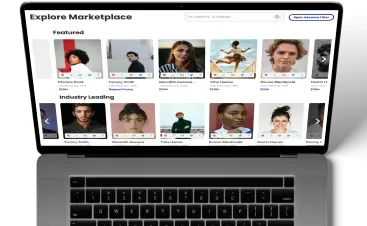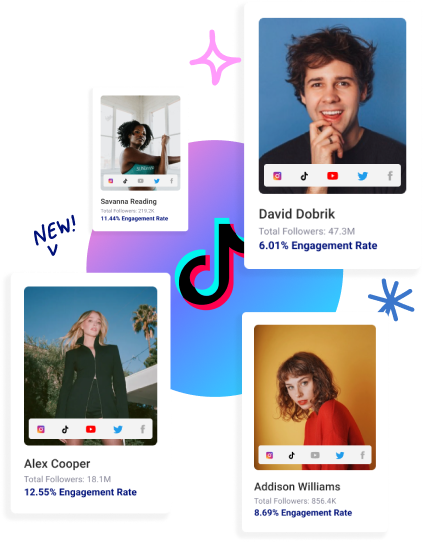Why should you bother with a niche marketing strategy? You want to sell your product to everyone, right?
Not necessarily. Your brand cannot be everything to everyone, and trying to target every buyer with your marketing is likely to backfire. However, if you can speak to one specific group of buyers, and sell them a product they absolutely love, you’re much more likely to be successful.
There is a niche for your brand. You just have to find that niche and market directly to it.
What is a niche?
A niche market is a narrow, well-defined slice of the larger market. It’s a small, specific group of buyers with their own interests, preferences, values, or identity. There is a niche for almost every kind of business and product, and thanks to the internet, potential buyers in those niches are easier to connect with than ever.
Consider the following scenarios:
- If you have foot pain, are you more likely to call a podiatrist or a general doctor?
- If you’re looking for plus-size fashion, are you more likely to visit a retailer that specializes in bigger sizes or a regular department store?
- If you’re vegan, do you shop at a health food store or the regular grocery store?
While a general practitioner can treat foot pain, a department store likely has a plus-size department, and there are, of course, vegan options at the grocery store, you’re probably going to choose the specialists.
Why? Because they’re the experts.They know their niches well, and they know your needs and problems better than a generalist ever could. In fact, you’re probably willing to pay a little more for that expertise as well.
This is the power of niching down. The challenge, however, is making it easy for your ideal buyers to find you. This is why it’s important to have a well thought-out niche content marketing strategy.
How to create a niche content marketing strategy
A niche marketing strategy is designed to attract a small group of buyers by appealing to their specific needs and interests. Your content does this by playing up the ways in which your product solves your target buyers’ unique problems.
You might create videos, ebooks, social media posts, or blog posts. You might also work with influencers in those niches. The content you create, however, must be the kind of content that is regularly consumed by the buyers in your niche. If your ideal buyer spends a lot of time on TikTok, for example, you shouldn’t spend your budget creating blog posts.
To create the right sort of content for your niche, you’ll need to know exactly which buyers you are targeting.
5 steps to building a content marketing strategy
Let’s say you own a chain of businesses that sell archery equipment and offer lessons. How do you use content marketing to target a niche?
-
Define your niche
This might seem like a no-brainer, but if you’re used to a “we can appeal to everyone” mindset, it’s not always easy to identify your niche. To get started, examine your industry and your competitors — what needs aren’t being met? There’s always a segment of the market with a problem that isn’t being solved.
As the owner of an archery chain, your first impulse might be to target athletes or children who are learning to shoot, but what are your competitors doing? Is that market segment oversaturated?
Examine your strengths as well. Are you meeting a niche need without realizing it? By looking at your existing buyers, what they want, and how they are already using your product, you may discover that your brand is tailor-made for a specific niche.
Maybe you find that a surprising demographic is visiting your locations. Your social media is getting engagement from middle aged women, people who loved archery back in summer camp and are interested in getting back into it.
-
Build a buyer persona
The next step is to identify the buyers in your market. Who is your ideal buyer? A buyer persona is a profile of a fictional person who is your ideal customer. The persona, which is put together using market and audience research, includes the person’s demographic data, professional information, challenges, goals, interests, and online behavior.
For example, your persona might be Paula, a white mom in her mid-40s who works from home, shops for handmade items on Etsy, uses Facebook and Instagram, and loved archery back when she was a kid in camp. She’d love to take it up again, but isn’t sure how. Paula has free time in the morning, after the kids go to school. She also has some disposable income.
Paula might not be a real person, but you haven’t just made Paula up out of thin air either. She’s a composite of information you get from seeing who is engaging with your social media, from surveys and other market research. All of your marketing materials should now be designed specifically to appeal to Paula.
-
Research keywords
Before you create content, you have to research keywords and the content that already exists.
What might Paula be searching for as she gets back into archery? She might be looking for beginner lessons for adults during the day, trying to understand which bow weights work best for her, or trying to understand which gear she needs and which she doesn’t.
Find the gaps in the content that already exists online; telling stories that competitors have been neglecting is one of the best ways to stand out in a crowded market, according to research from the Content Marketing Institute. For example, you may find that many competitors have articles on bow weights for young beginners, but not many have information for grown women, for example. Similarly, there’s not much information about which archery equipment works best with female body types.
-
Build a content calendar
Once you know what your market is looking for, it’s time to create a content calendar so that you’re consistently releasing content. Consistency is important. You are trying to position yourself as an expert, but if you only post sporadically, you won’t be able to build that audience. In fact, research finds that the most successful marketers use a content calendar.
Your calendar also gives you a better overview of your content, helping you understand what you’re publishing and when so you can build a coherent strategy rather than posting disparate pieces of content.
-
Create the content
The content you create will depend on your audience. Do they read blogs, look at Instagram posts, or are they using a different medium? Paula, for example, loves Facebook and Instagram, so you may want to invest in short how-to videos that teach her some of the basics. You might also create posts around some of the gear that you’re selling.
Don’t reinvent the wheel if you don’t have to; chances are you have plenty of content already, but it’s not packaged in a way that will appeal to your niche market. Audit the content on your website and in other materials to see what can be used in your campaign.
-
Distribute your content
How will you share your content? Distributing content goes far beyond simply sharing new content to your site and social media. Instead, it’s important to share your content on the platforms frequented by your ideal audience. This also means you should be looking for influencers followed by your niche.
Influencer marketing is one of the top channels used by content marketing. Marketers told researchers that influencer marketing has one of the highest ROIs of any other marketing channel.
Niches vs. general marketing
You might still be wondering how appealing to a niche, rather than all buyers, can help you boost your bottom line.
The answer is that while you might be marketing to one ideal buyer (Paula), you are still catching the attention of other people outside the niche who share some of Paula’s goals (learning archery) and challenges (not knowing how to start). They might not share every goal or challenge, but if you’re producing good content, your marketing will appeal to them as well.
In the meantime, by targeting an underserved market, you’re more likely to earn the trust and devotion of that market segment.
With that in mind it’s important to know the influencers in your niche. Who might Paula be looking for advice about finding the right armguard or about how to restring a bow? By finding the influencers who are already speaking to your niche, you can find the influencers your customers already like and trust. Those influencers can then help you build a relationship with their audience.
To identify influencers to support you in your niche content marketing strategy, sign up for Glewee and launch unlimited customizable campaigns without the monthly subscription fees.










